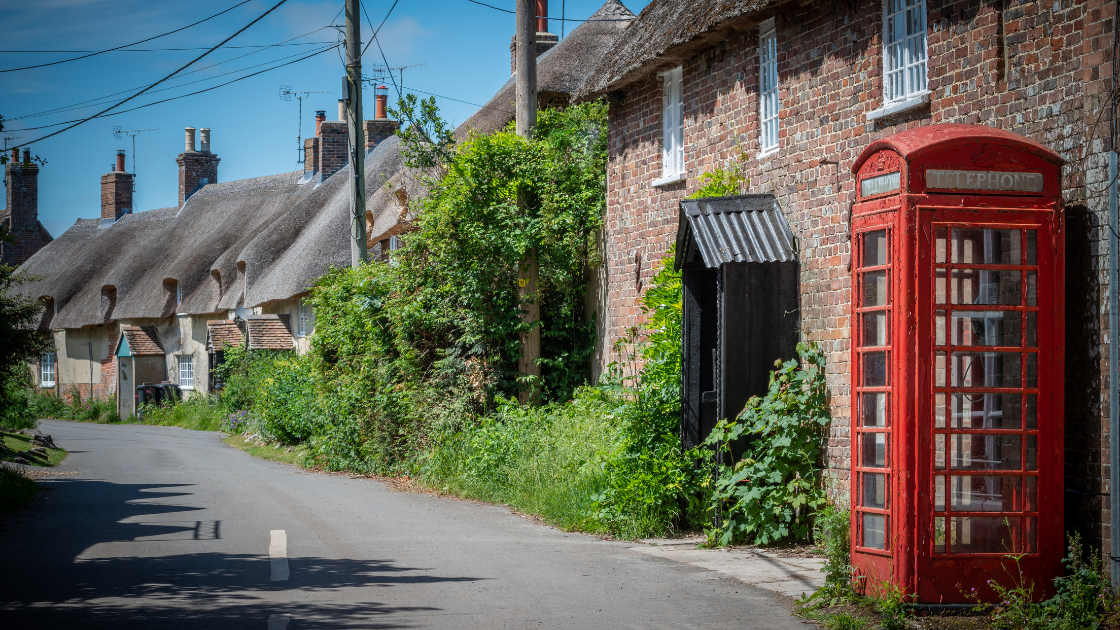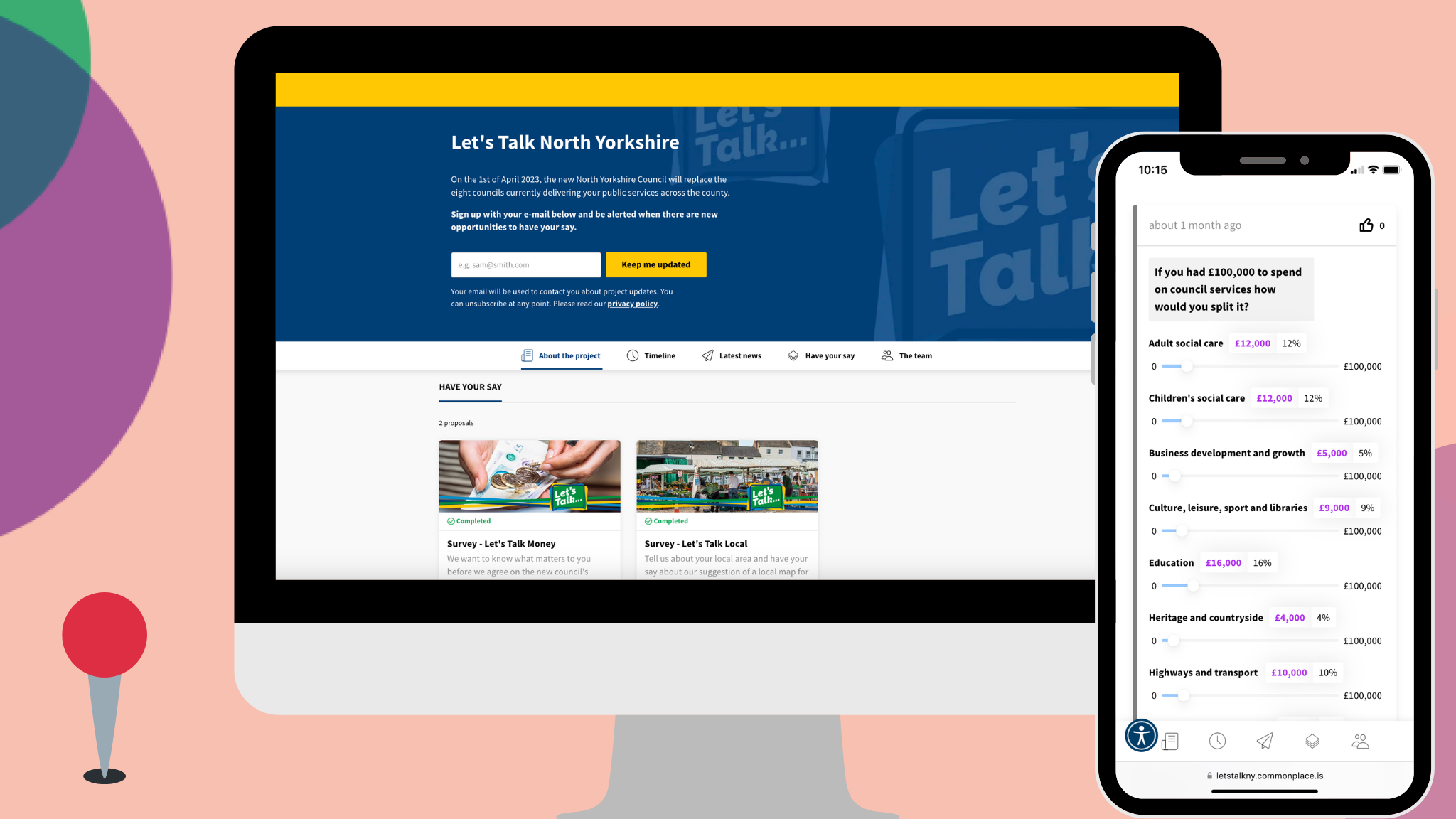How to effectively engage rural communities

By Charlotte Cooper | 26/01/23 10:50
6 min read
Rural communities are a cornerstone of the population, but engagement can sometimes be difficult in areas so remote. What are the best ways to reach as many people as possible?
With almost 2000 engagements under our belt, book a free Demo with us to see how our engagement tools help you create effective two-way conversations with your local citizens - wherever they are.
The whole point of effective community engagement is to communicate with as many people as possible. Rural communities make up 16% of the UK, but present a unique set of challenges that can lower awareness of engagement projects and limit participation.
Because of the physical distances, online engagement is, in theory, ideal for more scattered communities and residents. However, there are two types of obstacles. First, technical - some UK rural communities struggle for reliable, high-speed Internet connections. Second, thematic - in rural communities some issues are hyper-local and may only impact few households, so engaging in issues that impact on a wider area may seem less relevant.
The solution? A well-rounded engagement strategy. Communities are a lot like snowflakes, with no two being exactly alike. Each engagement plan needs to be carefully considered so it's best suited for both the type of project and the communities that live in the area.
For example, an active travel plan for Birmingham and a masterplanning website for a rural area in Cornwall are hardly going to be the same.
With this in mind, we’ve gathered our best tips for making your next engagement more accessible and interesting to rural communities so you can start an engaging and, more importantly, successful two-way conversation.
Let’s dive in.
Rural community developments - what are the issues?

Like urban areas, rural communities have their fair share of planning and economic development. However rural areas can present their own unique challenges to achieving wide-spreading engagements
What are the most common issues when it comes to generating awareness?
- Distance: Rural communities often face unique challenges when trying to organise in-person community engagement meetings. This is especially true if the engagement covers a large geographical area. Lack of public transport can also be a barrier to participation.
- Accessibility: There will always be members of the community who are either working, unaware or unavailable to come to in-person meetings. This can stop chunks of the community from voicing their opinions on new projects and make them feel alienated from the decision-making process.
- Internet coverage: While high-speed internet is something many of us take for granted, there are a number of mobile data and internet black spots in more rural areas of the UK.
- Conflict: If there isn’t clear communication about project details and intent, conflict can quickly arise between local authorities and community network leaders. The recent trend for people to move from cities to more rural settings is creating a further source of tension and greater scrutiny of decisions to ensure they benefit established communities.
- Resistance to change: In many rural communities, citizens have deep local roots and may be resistant to proposed changes.
The solution here is to reframe public engagement episodes as active and open conversations with the community and show that you are doing all you can to make the conversation as accessible as possible. This is where a blended approach comes in on a central project website.
Benefits of an engagement website for rural community developments
.png?width=801&height=500&name=Email%20Campaign%20Mangement%20-%20Build%20a%20network%20of%20subscribed%20community%20members%20(2).png)
A central online hub is a great place to start for any new community engagement. Not only does it keep all the information about the project in one easy-to-access location, but updating and informing citizens becomes much easier when all the information is just a few clicks away. With engagements that cover a number of mostly remote areas, getting people together to discuss new developments has always been tricky. The pandemic only heightened this with the whole world - including planning processes - having to shift online.
Having an online engagement platform has a number of advantages that can help mitigate some of the previously mentioned challenges for more rural engagements:
- Distance: With an online hub, there’s no need to travel for information so everyone can see all the plans from the comfort of their own home. With the news feed feature, it’s easy to present project updates. You can also set up email notifications so the community immediately knows when there are updates or new proposals to look at.
- Accessibility: Hosting project details and documents online means anyone with internet access should be able to see them wherever they have a connection. Plus, if in-person meetings are usually popular, these can be done online with a ‘Virtual Town Hall' meeting instead. (Commonplace can even be integrated with Zoom to make this easier!)
If the community has a strong oral tradition, giving people the chance to speak first-hand about proposals will give invaluable insight. If meetings do go ahead in person, they can also be recorded (with permission) and uploaded later for the rest of the community to hear. Make sure to keep track of any comments left and respond so people feel a part of the conversation. - Internet coverage: Digital first engagement doesn’t have to mean digital only. While we always advocate for a single online hub to keep your plan in an easy-to-access location, physical tools can absolutely be a part of your engagement plan as well. For example, you can still send personal flyers and notes if they are popular with members of the community as well as hang posters in popular community spots. You can always add your website address or a QR code that leads to your platform so people have the option to go from paper to digital at their convenience.
- Conflict: Giving people the chance to voice their opinions and concerns is one of the best ways to avoid friction later down the line. Interactive maps and surveys allow people to clearly show their sentiment towards a project as well as share their own thoughts and opinions about any changes. Remember, negative comments aren’t inherently bad, even if you get a lot of them. All comments left are part of an engagement and it’s then time to see why people feel this way and if there's anything you can do to help people’s fears and concerns. Make sure to check out our guide on dealing with negative engagements to learn how to turn these comments into a positive resource for your project.
- Resistance to change: This is where an ongoing engagement helps. If you maintain a dialogue with the community between projects it will help show that the local authority is invested in the community. Helping people understand the present situation and what improvements their area could benefit from is always a big step forward and helps lower distrust of planners.
It’s also a good idea to speak to community leaders or groups directly about what the main points of fear and pride are within their areas. Community engagements are about doing what’s best for the local people after all, so taking the time to know and understand them is crucial for any new project.
Poor internet in a rural area? Try these tips!
Internet and mobile network operators’ service quality and speed are set to improve in the near future, but many rural areas still suffer from slower speeds when outside the main town centre or when in an open field. While having a strong offline presence is one way to help with this, it's also important to optimise your website's loading speed - especially when 47% of people expect websites to load in 2 seconds or less.
Here are a few things to consider before pushing your website live to ensure that your information is as easy to access as possible:
- Image size: A lot of images are larger files than you might think. This means that they are going to take longer to load, especially if you’re in an area with poor signal coverage. Definitely keep your pages visually interesting, but reduce your pictures down to a smaller file size and also make sure that a page can be understood if the image fails to load.
- Useful text: Since text will always load first, make sure the point of each page is obvious through your choice of headings and titles or subtitles. The main subject should be clear in the title with all important information laid out in the first paragraphs or points. It’s also a good idea to show where the community can find information offline as well as any relevant contact information should they want to speak to you directly.
- Consider other methods of delivering information: If you’re engaging in an area with poor internet coverage, consider other ways that your information can be delivered. For example, updates can be sent via email that can be loaded easier and then saved so it can be read offline.
If you minimise your use of pictures they should load even with lower network bandwidth availability. This can be done in conjunction with a strong offline strategy so those less tech-savvy can still get the information they need. If your area of choice still has a notice board people regularly look at, then take advantage. Do a lot of people use a local bus service? Hang weatherproof posters and flyers around the bus stops as well.
Example: Let’s Talk North Yorkshire
On the 1st of April 2023, the new North Yorkshire Council will replace the eight councils currently delivering public services across the county as part of the biggest restructuring of local government in the county for nearly 50 years. With such a huge change, the council wanted a thorough review of public opinion so they could best serve their constituents in the future and ease the public through such a massive shake-up. Thus, Let’s Talk North Yorkshire was born.
The goal was to reach the four corners of the county, no matter how remote. A full comms plan was used to spread the website surveys as far as possible - including to the most geographically isolated.
On top of a social media push, radio ads and local press, there were 214 events to reach the community where they actually gathered: around supermarkets, in the high street and in local libraries. Their super mobile library was even utilised for people in more remote villages to complete surveys. The community from Cowling in Craven remarked that no-one had come to ask them their opinion before and were grateful to be given the opportunity.
Explore the Let’s Talk Initiave
Wherever you’re in a city, small town, or are engaging in a rural community, Commonplace is here to help you create the best possible strategy. Having launched almost 2000 project websites we’ve helped engage with all kinds of communities and have the expertise and best practice examples available to kick-start your project and to assist you and your team as well.
It’s time to have a closer look at everything you just read about! One of our friendly team members will be happy to jump on a call and take you on a personalised tour of the platform. Just click below to book a free demo and our team will be in touch!

